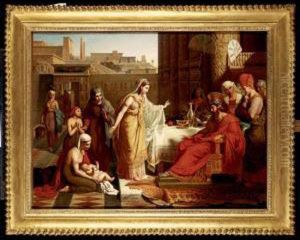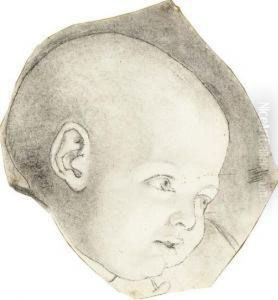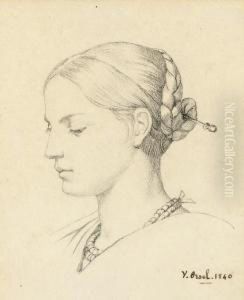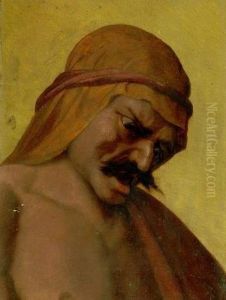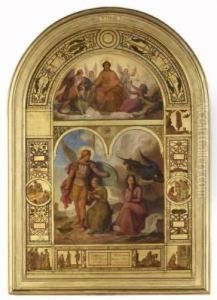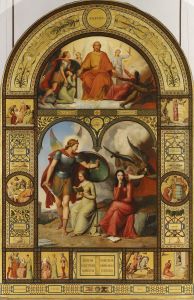Victor Orsel Paintings
Victor Orsel was a French painter born on July 9, 1795, in Oullins, Rhône. He is associated with the Neoclassical and early Romantic periods, and his work is characterized by its historical and religious themes, often imbued with a poetic and moral sensibility. Orsel was a student of Pierre Révoil and later of Jean-Auguste-Dominique Ingres, two prominent figures in French art. Studying under such masters, Orsel developed a meticulous technique and a keen sense of composition, which would define his own style.
In 1815, Orsel moved to Rome, which proved to be a formative period in his career. The city's classical heritage and the works of Renaissance masters had a profound influence on his artistic development. During his time in Italy, he became associated with a group of like-minded artists known as the Nazarenes, who sought to revive the spirituality and purity they found in medieval and early Renaissance art. His religious paintings from this period reflect a contemplative nature and a focus on narrative clarity.
Returning to France in the 1820s, Orsel opened a studio in Lyon and later in Paris. His work received acclaim and he became known for his frescoes and oil paintings that often depicted scenes from the Bible or Christian traditions. One of his most significant works is the fresco series in the Chapel of Saint Philomene in the Church of Notre-Dame de Fourvière in Lyon, which he worked on intermittently from 1835 until his death in 1850. This project is considered one of his masterpieces and exemplifies his mature style, characterized by a harmonious color palette and a serene, devotional atmosphere.
Despite his success, Victor Orsel remained a relatively modest figure in the art world compared to his contemporaries. His dedication to religious art, at a time when the art scene was increasingly dominated by secular and political themes, meant that his work was sometimes overshadowed by that of other artists. Nevertheless, his paintings and frescoes continue to be admired for their technical skill, emotional depth, and spiritual richness.
Orsel's contribution to French art was cut short by his untimely death on February 14, 1850, in Paris. His legacy lives on through his artworks, which can be found in various churches and museums in France. His approach to art, which combined a respect for tradition with a personal spiritual quest, has earned him a place in the annals of 19th-century French painting.

